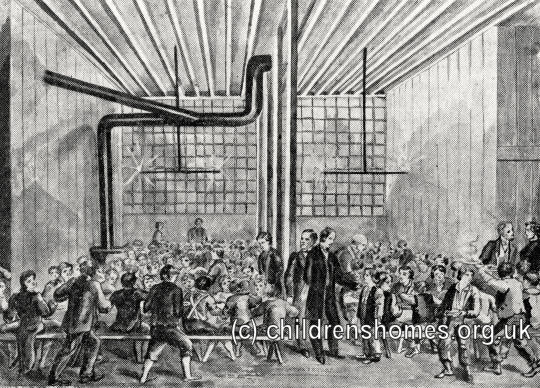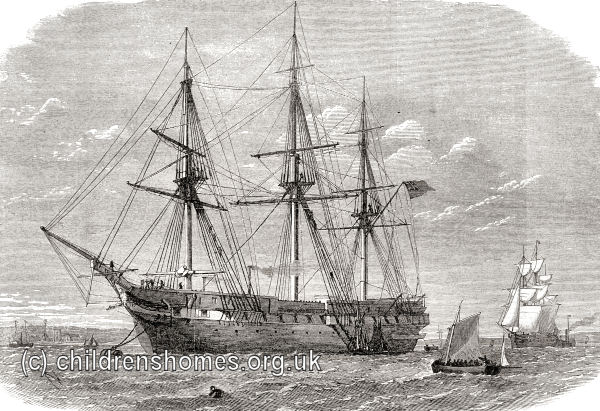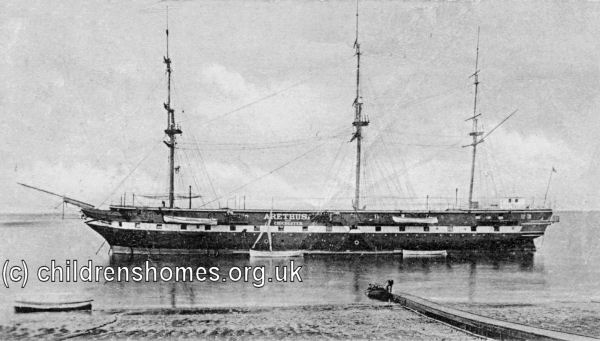The Shaftesbury Homes and Arethusa
The Chichester and Arethusa
Lord Shaftesbury's continued support for the Society led, in 1866, to his becoming its Patron. In January of that year, great public interest was stirred up by the publication in the Pall Mall Gazette of a series of articles entitled A Night in a Workhouse. The anonymous journalist, who had spent a night in causal ward the Lambeth workhouse, graphically described the bleak conditions provided for the inmates, who included several young boys. In the wake of these revelations, Shaftesbury launched a new initiative to take such boys off the streets by giving them a training for life at sea. The following month, on St Valentine's Night (February 14th), he organised a supper at the Broad Street Refuge to which were invited any boys under the age of 16 who were staying at night refuges and workhouse casual wards in the area. Tempted by the prospect of a warm fire free hot meal, around 200 boys overcame their natural caution and attended the event.

The Great Supper, 1866. © Peter Higginbotham
The boys were welcomed by William Williams and his helpers and were shown into the main school room, set out as a dining, where the Refuge's own 200 residents were also waiting to greet their guests. After filling the visitors up with roast beef, plum pudding and coffee, Lord Shaftesbury spent some time going around the room, talking the boys and hearing about their lives. He then came to the main point of the evening and addressed the assembled company. "Now, boys, supposing that there were in the Thames a big ship large enough to contain a thousand boys, would you like to be placed on board to be taught a trade or trained for the Navy and Merchant Service?" Shaftesbury's words were greeted with cheers and roars of approval and he promised to set about finding a vessel for the purpose. His request to the Admiralty received a rapid and positive response, with the redundant frigate Chichester being offered to the Society. After being fitted out, the Chichester was moored on the Thames off Greenhithe and officially inaugurated into its new role on December 18th, 1866.

The Chichester, 1867. © Peter Higginbotham
The Chichester proved a great success with more than 1300 boys accepted for training on the ship by the summer of 1874, with up to 250 resident on board at any one time. A proposal to establish a second ship was quickly met by the offer of £5,000 from Lady Burdett-Coutts to fund the venture. The Admiralty again proved forthcoming and provided the Arethusa, a wooden frigate which could accommodate staff and 250 boys. The refitted Arethusa was moored near to the Chichester and was officially opened in August, 1874.

The Arethusa, c.1900. © Peter Higginbotham
The Chichester was sold in 1889 and replaced by a smaller and more modern vessel, the brigantine Ballerina, which was renamed Chichester.
Except where indicated, this page () © Peter Higginbotham. Contents may not be reproduced without permission.


